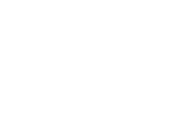 |
 |
 |

|
The transformation of women’s clothing through the 1940s and 1950s will be on display in the Museum of Vancouver’s newest fashion exhibition - From Rationing to Ravishing - featuring day and evening wear from the likes of Christian Dior, Cristóbal Balenciaga, and Elsa Schiaparelli
©MOV
|
|
 |
From Rationing to Ravishing
18/9/2014-8/3/2015
Ravishing exhibition revisits fashion trends of the 1940s and 1950s
The Museum of Vancouver is excited to announce the opening of From Rationing to Ravishing on September 18, 2014. This exhibition will feature rare examples of haute couture and Vancouver-made clothing that reflect how WWII changed society.
From the collections of guest curators Ivan Sayers and Claus Jahnke—the team that created Art Deco Chic—and the vaults of the Museum of Vancouver, From Rationing to Ravishing will present more than 80 historic garments and accessories. Highlights include: wartime wedding dresses, Boeing Vancouver overalls, cocktail dresses, and fashions designed by renowned European couturiers, including Christian Dior, Cristóbal Balenciaga, and Elsa Schiaparelli.
|

|
Posted 9 October 2014
|
Share this:
|
|
The exhibition also includes a dress from Ceil Chapman, who produced high-quality, French-inspired garments. She was reportedly Marilyn Monroe’s favourite designer and counted Elizabeth Taylor and Mamie Van Doren as famous clients. Lauren Bacall’s shoes, Peruvian soprano Yma Sumac’s dress suit and a suit from Miss Germany 1955 will also be on display.
|
|
|
|
“
In From Rationing to Ravishing, we tried to bring together a collection of garments and accessories that illustrate a variety of historical references,” stated Sayers, one of Canada’s preeminent fashion historians. Jahnke elaborates, “We chose the artifacts for their relevance, their appearance, and their stories.
”
|
|
|
From Rationing to Ravishing will include participatory features that engage families, including an activity station for kids and adults alike, and the opportunity to digitally wear period garments. Over the exhibition’s run, MOV will host a number of history-themed events, including two fashion shows that feature exceptional examples from Sayers’ private collection and two “talk and tour” events, also led by Sayers.
Fashion history enthusiasts will get a sneak peek into the curators’ collection at Oakridge Centre, where five glamorous garments will be on display from September 11th through the 21st. Susan Nicol, General Manager at Oakridge Centre explains their commitment to this exhibition: “As a fashion and style destination in Vancouver for over 55 years, Oakridge Centre has been a driver of the evolution of fashion in the lower mainland. We are excited to partner with the Museum of Vancouver to showcase some of the significant trends of the past and to help bring to the community a little of our shared history.”
|
|
|
From Rationing to Ravishing: the Transformation of Women's Fashion in the 1940s and 1950s, opens to the public on September 18th; scheduled to close on March 8th, 2015. Additional exhibition and event information can be found at www.museumofvancouver.ca/ravishing
MOV Events:
Curator's Talk & Tour: From Rationing to Ravishing, with Ivan Sayers
· Thursday, October 2, 2014 at 7:00pm
· Thursday, December 4, 2014 at 7:00pm
· Additional members-only dates to be announced
Join Vancouver's preeminent fashion historian and From Rationing to Ravishing guest curator Ivan Sayers for an informative stroll amongst displays of historic clothing within the exhibition space. Follow Ivan as he describes the evolution of women's fashion from wartime utility to postwar extravagance.
Fashion Show: From Rationing to Ravishing, with Ivan Sayers
· Saturday, November 22, 2014 at 7:00pm
· Saturday, February 28, 2015 at 2:00pm
Fashion historian and guest curator Ivan Sayers will produce and narrate live fashion shows that complement From Rationing to Ravishing. These shows will feature exceptional examples from Ivan’s own private collection and others.
|
|
|
|
|
|
|


